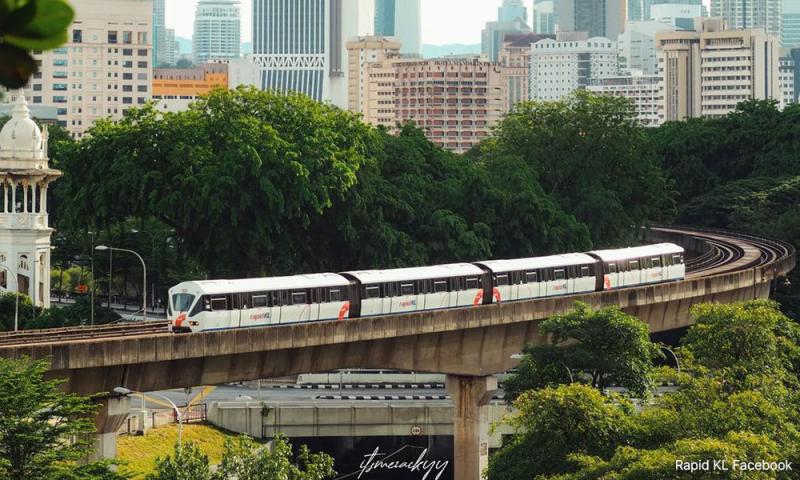LETTER | MRT, LRT, RTS, what else?
LETTER | The news headline reads, “A-G’s report: MRT1 accounts still not closed after seven years due to discrepancies since 2013”.
I am not surprised because I had written since 2014 - “Mr Prime Minister, full review of KVMRT project required” (Malay Mail, 20/8/2014)”, “KVMRT - What is the real cost?” (Malay Mail, 22/12/2016), and “Tell us the real costs of MRT projects” (The Malaysian Insight, 22/6/2022).
In the 2014 article, I suggested, “The auditor-general or an independent body may want to scrutinise the fees, reimbursable, and ‘allowed’ contingencies provided in the contract with the project delivery partner.”
“While at it, it would be advisable to also look at the total project cost that may have exceeded the budgeted amount”.
In another A-G report, the RTS Link (4km link - developer and asset owner is also MRT Corp) project’s estimated cost had increased by 29.9 percent or by RM1.2 billion to a total of RM5.24 billion as of Dec 31, 2023.
It is a railway shuttle between Johor Bahru and Woodlands, Singapore, to help alleviate congestion at immigration checkpoints for both countries.
The reasons given were the impact of the Covid-19 pandemic, expansion of the depot work scope, new Traffic Diversion Scheme, the Customs, Immigration and Quarantine (CIQ) Complex, iconic facades, aesthetic flyover structures, additional land acquisition, and construction of parking facilities.
We can understand the impact of the pandemic but surely the rest should have been considered earlier, especially the CIQ and parking facilities. And are iconic facades and aesthetic fly-over a necessity when the government’s financial position is a concern?
What is more chilling will be the Mutiara Line LRT (MLL) in Penang (28km and costing RM10.5 billion - also to be owned by MRT Corp).
It was initially a state project but the government expedited development with additional funding before fully taking it over.
Funding was contentious as Penang was an opposition state. It resorted to the PSI reclamation project for funding and estimated the sale of the islets would generate RM70 billion and the development of the islets would net an economic spillover of RM100 billion.
Critics say the MLL is “wasteful”, with an estimated annual loss of over RM500 million.
What is needed is an autonomous rail transit that is much cheaper with greater flexibility compared to the LRT, which is too car-centric.
Will the federal government forsake RM500, million especially when Penang had a better idea through the PSI reclamation project?
I would suggest the auditor-general to review the project papers.
Areas to look at, among others, are ridership targets, environmental and social impact studies, budgeted reimbursables, amount for contingencies, station location, feeder-bus system, and confirm whether there was any peer review.
Over-optimistic ridership numbers apply to the KL MRT, LRT and Express Rail Line too. And look into the RM10.5 billion estimated cost to avoid cost overruns.
MRT was touted to be a game-changer. Yes, it changed our lives to perpetual traffic jams since its construction until today.
There wasn’t a clear framework to assess the productive efficiency of the MRT project versus other means of public transport as well as allocative efficiency (public transport versus other competing demands for public resources). Is there one for MLL and High-Speed Rail (HSR)?
As of 2023, the government pumped over RM59 billion into MRT Corp and RM16.6 billion into the LRT3.
When everything is completed - including MRT3, RTS Link, and MLL, the amount will be about RM140 billion excluding cost overruns or close to 10 percent of the RM1.5 trillion national debt figure!
Meanwhile, traffic jams will still be the order of the day with concerns about last-mile connectivity.
The objectives of MRT1, after eight years, have not been met and this may be repeated for MRT2 as ridership forecasts are very optimistic.
Is public transport an option or a necessity? How about other not-so-developed areas, will they remain as is, 10 years from now? How about our much-talked-about education system that needs upgrading in order to produce a quality workforce for the future and the public health system?
And there is also the Penang undersea tunnel project. It was designed to alleviate chronic traffic congestion but wouldn’t it choke the island with more vehicles from the mainland? Isn’t this short-sightedness?
In the meantime, we promote vehicle sales with more cars in Penang’s narrow roads (electric vehicles given various exemptions and incentives).
Contractors reap higher profits constructing the rail projects and so does housing developers, creating an affordability crisis.
In Parliament, the deputy finance minister said there are plans to ensure MRT Corp can reduce its dependency on the government.
Good to hear but at a time when the government is so concerned about national debt and also the tribulations of KL MRT, LRT, Monorail, and ERL, it may not be a good idea to proceed with the MLL and HSR too.
The transport minister said the “heavy losses” of MRT Corp were not solely for financial gain but for positive economic impact.
Were any calculations done for the MRT1 and MRT2 projects? Gross domestic product may increase during the construction period but is it sustainable knowing it is not constructed to recoup the costs over a short period of time, or is it recoupable?
Costs, direct and indirect such as higher fuel usage, vehicle wear and tear, time wasted (unproductive) at traffic jams not only add costs to vehicle owners but also affect productivity levels of the country.
Do look at alternatives when we can’t afford it. What say you…?
The views expressed here are those of the author/contributor and do not necessarily represent the views of Malaysiakini.
RM12.50 / month
- Unlimited access to award-winning journalism
- Comment and share your opinions on all our articles
- Gift interesting stories to your friends
- Tax deductable
